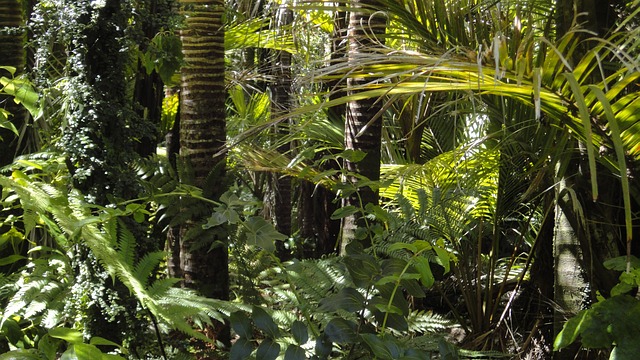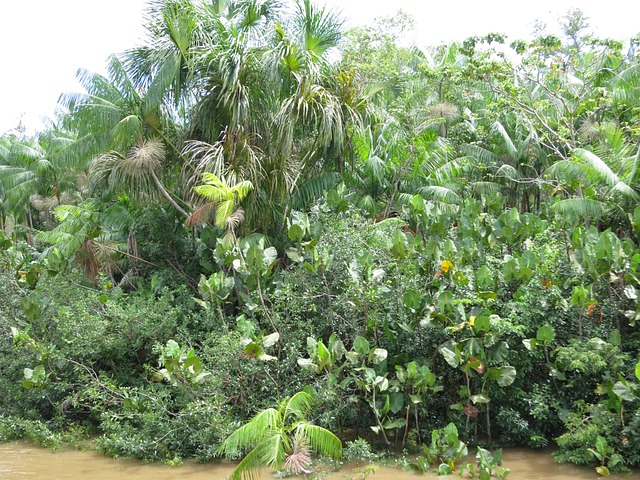
The Amazon in crisis: Forest loss threatens the region and the planet
The Amazon is in crisis. Deforestation and forest loss are threatening the region – and the planet – with dramatic consequences. The Amazon rainforest is one of the most important ecosystems on Earth, and it’s in danger of being lost forever. But what can be done to save it? Let’s take a closer look at the situation and find out.
The Amazon is the world’s largest tropical forest, and it’s in crisis. Deforestation, fires, and degradation are threatening the Amazon, and the loss of surface water, rivers that are increasingly disconnected and polluted, and a growing number of droughts are adding to the pressure. If this immense pressure is not slowed or stopped, it will irreversibly damage the Amazon and the overall planet in the very near future.
The Living Amazon Report 2022 from WWF synthesizes the latest information on the region, its critical global role, the threats it faces, and solutions that require an unprecedented global commitment to stop Amazon’s destruction. The report makes clear that the actions we take today will determine whether Amazon collapses or thrives in the future. To protect this vital forest, we must work together to implement solutions at an unprecedented scale and speed. Only then can we hope to save the Amazon—and our planet.
The importance of this issue
The Amazon is the world’s biggest tropical forest and river system, making it a very intricate biome.
People:
The Amazon is one of the most diverse regions in the world, with over 500 different indigenous groups living there. It’s also home to around 2.2 million people who rely on this land for their livelihoods- including many Indigenous peoples from 47 different tribes!
Biodiversity and wildlife:
The Amazon rainforest is one of the most biodiverse places on Earth, home to an estimated 10% of the world’s species. This figure includes 9% of mammals, 14% of birds, 8% of amphibians, 13% of freshwater fish, and 22% of vascular plants. Many of these species are found nowhere else in the world, and scientists believe there could be up to 90% still to be discovered. The Amazon is under threat from human activity, including deforestation and pollution, which could lead to the loss of this incredible biodiversity. It is therefore essential that we take steps to protect the Amazon and its wildlife.
Forests:
Forests play a vital role in the Amazon region, providing many ecosystem services that are essential for the well-being of local communities and people around the world. Forests help to regulate climate and hydrology, prevent soil erosion and support a diverse range of plant and animal life. In addition, forests provide livelihoods for local people and are a key part of the global economy. However, forests in the Amazon region are under threat from deforestation and climate change. Deforestation reduces the ability of forests to provide these ecosystem services, leading to a loss of livelihoods, well-being, and ecological stability. To protect the Amazon region and its people, it is essential to reduce deforestation and promote forest conservation.
Climate:
Forests are the most important carbon sink on Earth, regulating and helping to stabilize our climate. Any loss or degradation of these forests will cause an increase in greenhouse gasses that we release into the atmosphere at record highs today.
Food
The Amazon River basin is vital to the ecosystem of South America. The basin’s “flying rivers” transport moisture outside of the basin to the southern part of the continent, providing the necessary conditions for agriculture in Argentina, Paraguay, Uruguay, and southern Brazil. Additionally, the health and vitality of the Amazon River basin are fundamental locally for the millions of people who rely on its waterways for fish. In short, the Amazon River basin is a keystone ecosystem that supports local economies and human livelihoods.
Freshwater:
The Amazon River is the largest free-flowing river in the world. Every day, it releases an estimated 206 billion gallons of freshwater into the Atlantic Ocean. This freshwater plays a vital role in regulating the Earth’s climate and sustaining marine life. However, the Amazon is under threat from pollution, dam construction, and deforestation. If the Amazon River becomes polluted or silted up, it could have devastating consequences for the planet. That’s why it’s so important to protect this vital resource. The Amazon River basin is home to 20% of the world’s freshwater resources. It also supports a diverse ecosystem that includes mangroves, wetlands, and rainforests.

Reversing the trend
The Amazon is the world’s largest tropical rainforest, and it plays a vital role in our planet’s health. The forest regulates climate, provides a home for countless species of plants and animals, and is a vital source of freshwater. However, the Amazon is under threat from deforestation, fires, and climate change. As a result, it is more important than ever to protect this vital ecosystem.
One way to help protect Amazon is to support the 80×25 initiative. This initiative aims to conserve 80% of Amazon by 2025. It was presented by the Coordinator of the Indigenous Organizations of the Amazon Basin, adopted as an IUCN motion in 2021, and supported by WWF, but will require further commitment at all levels to succeed. We can all help to support this initiative by becoming more aware of the importance of Amazon and taking action to protect it. Together, we can make sure that this vital ecosystem thrives for generations to come.